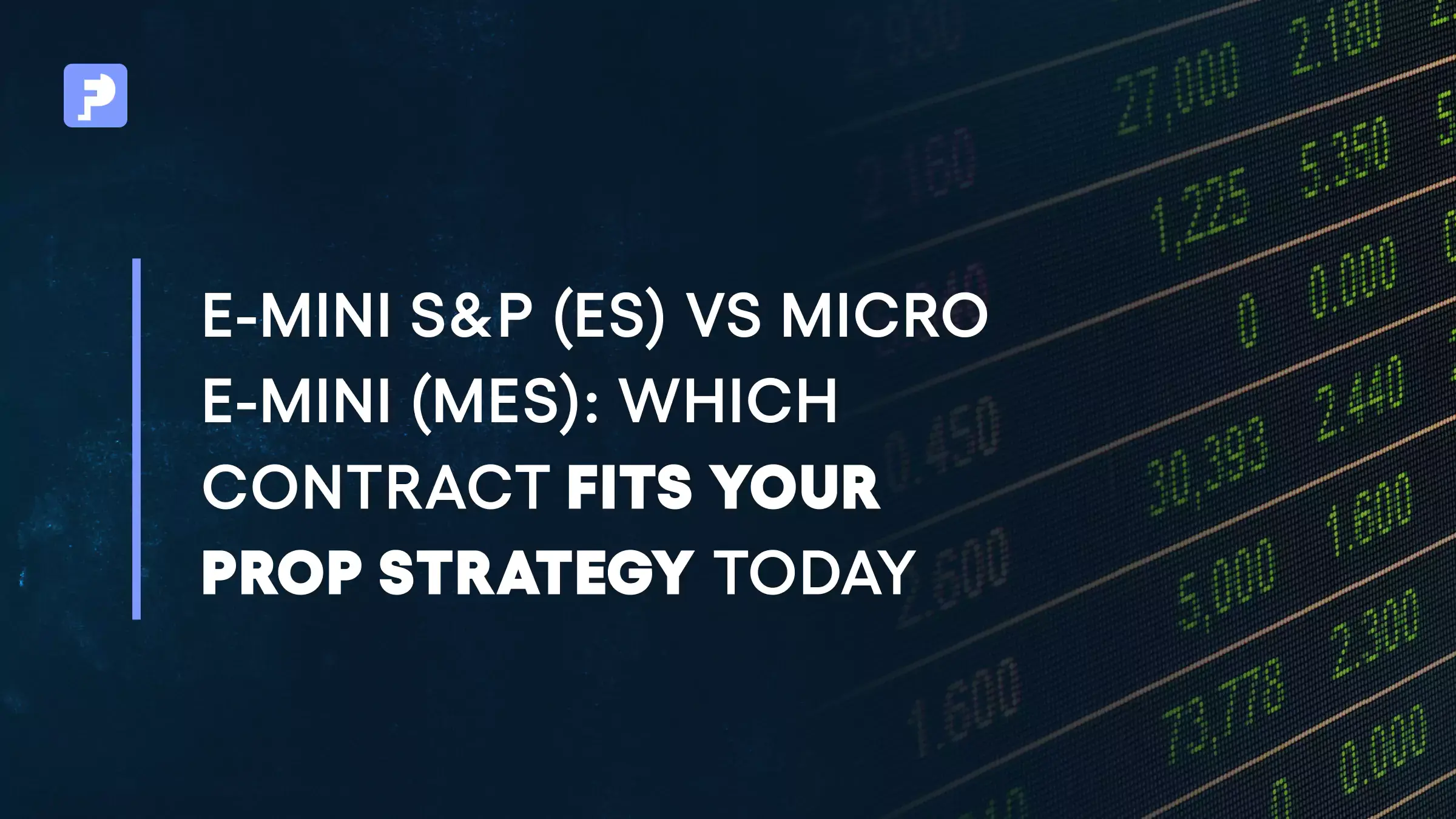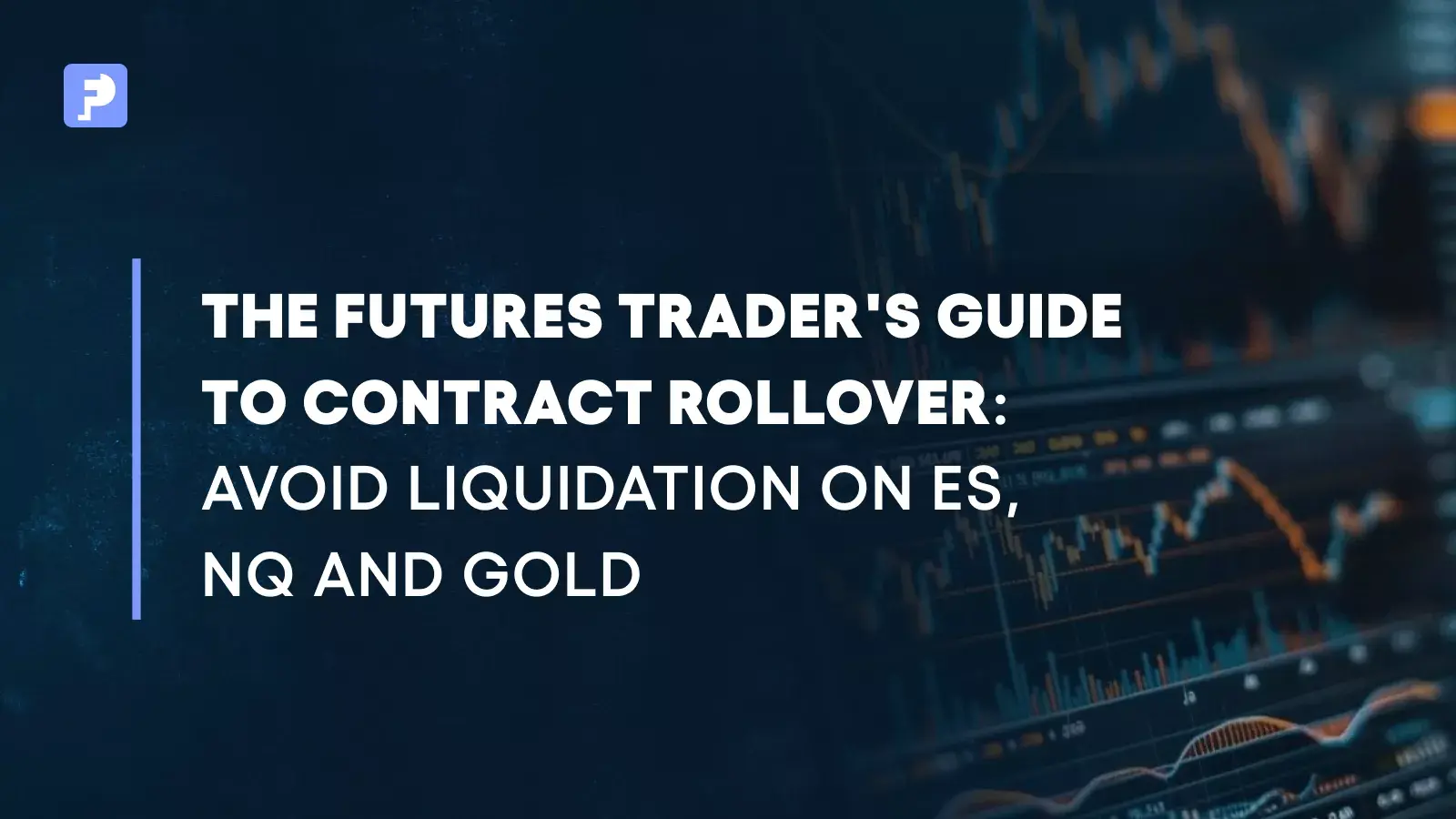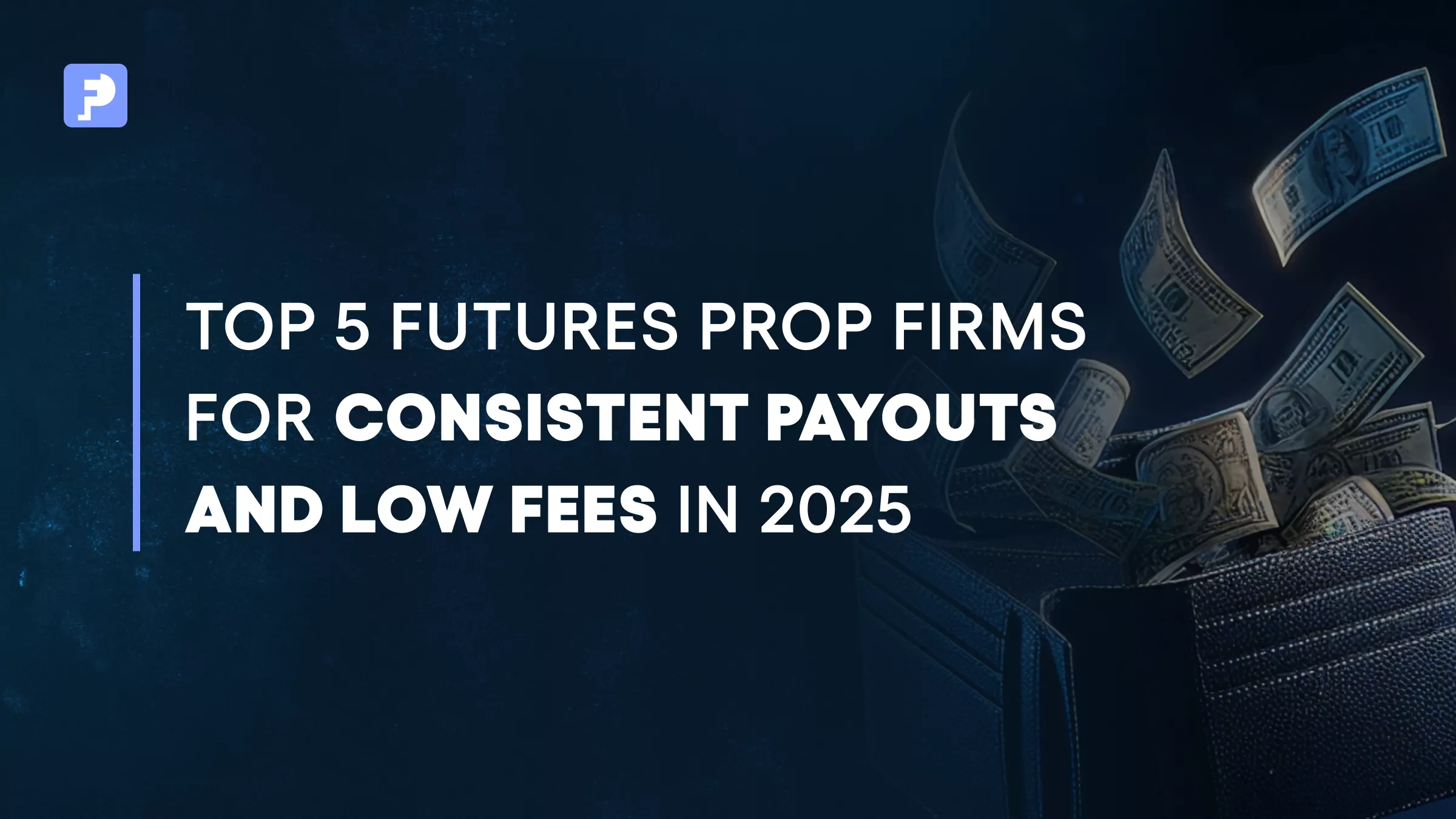
Emini S&P (ES) vs Micro Emini (MES): Which Contract Fits Your Prop Strategy Today
Key Takeaway
- The Micro E-mini S&P 500 (MES) is one tenth the notional size of the E-mini S&P 500 (ES) yet mirrors it tick for tick, giving funded traders proportional exposure with less risk.
- ES provides superior liquidity and tighter spreads, making it the contract of choice for larger accounts.
- Prop traders can scale from MES to ES seamlessly, maintaining strategy while adjusting position size.
Should I Trade ES or MES in My Funded Account?
“Should I be trading the full E-mini (ES) or the Micro E-mini (MES) in my funded account?” Many traders wrestle with this decision when facing limited buying power, trailing drawdown rules, and strict risk management.
This guide compares E-mini vs Micro E-mini contracts using verified CME data: contract specifications, tick values, margin requirements, liquidity, and practical risk scenarios. If you are still choosing your prop firm, Choosing the Right Prop Trading Firm for Futures Trading.
Contract Specs That Matter in Trading
| Metric | ES (E-mini S&P 500) | MES (Micro E-mini S&P 500) |
|---|---|---|
| Contract multiplier / notional | $50 × S&P 500 index | $5 × S&P 500 index |
| Tick size | 0.25 index points | 0.25 index points |
| Tick value | $12.50 | $1.25 |
| Value of one index point move | $50 | $5 |
| Trading hours | Sunday 5:00 p.m. CT – Friday 4:00 p.m. CT with daily 1-hour break | Same |
| Expiration / settlement | Quarterly cycle (March, June, September, December) | Quarterly, cash settled |
Why this matters for traders:
- One ES equals 10 MES in exposure.
- A one-point move is $50 in ES vs $5 in MES.
- Both trade on the same nearly 24-hour session, so setups are identical across contracts.
For reference, see CME’s official E-mini S&P 500 contract specifications.
ES Liquidity vs MES Liquidity
- ES liquidity: Among the most liquid futures in the world, with daily volume exceeding 1.2 million contracts in active sessions.
- MES liquidity: CME positions MES as the “smaller sized version” of ES, with the same tick structure but less depth.
Practical takeaway:
- During peak U.S. equity hours, both ES and MES trade at one-tick spreads.
- ES generally provides deeper order book liquidity, while MES may show thinner fills overnight or during contract roll.
ES Margin vs MES Margin
ES margins (CME official):
- Initial margin: 15,344 USD
- Maintenance margin: 14,697 USD
MES margin (broker example):
- Some brokers list intraday MES margin as ~50 USD, but official CME figures should be confirmed on the CME Performance Bonds page.
Risk impact for prop traders:
- On a 100,000 USD funded account risking 0.5% ($500) per trade:
- ES: A 40-tick stop = $500 → position size = 1 ES.
- MES: A 40-tick stop = $50 → position size = 10 MES.
This shows MES offers finer control over risk in funded environments where trailing drawdown is strict. To avoid costly mistakes with margins and drawdown, see Common Mistakes Traders Make in Funded Futures Accounts.
Scaling from MES to ES
Because MES and ES move tick for tick, traders can scale exposure smoothly:
- 4 MES = $5 per tick
- 1 ES = $12.50 per tick
- 1 ES + 3 MES = $16.25 per tick
This scaling path lets you “graduate” from MES into ES without altering strategies or execution.
Trader Takeaways
- MES: Lower barrier to entry, safer for newer funded traders.
- ES: More efficient at larger size, superior liquidity in peak hours.
- Both track the S&P 500 index identically, point for point.
- Smart scaling: start with MES, graduate into ES as performance stabilizes.
Conclusion
At FunderPro Futures, both ES and MES contracts are available. Use these verified specs to choose the contract that fits your capital and risk approach.
Start your FunderPro Futures Challenge today and trade the contract size that matches your strategy.
Q&A: ES vs MES
Yes. MES shares the same tick size and trading hours as ES. Liquidity is lower than ES but sufficient for most retail and funded traders.
ES requires more than 15,000 USD in initial margin at the exchange level, while MES margins are a fraction of that. Brokers may offer reduced intraday MES margins as low as ~50 USD.
Yes. Both use the same tick increment of 0.25 index points, moving tick for tick with only contract size different.
Yes. Their 10× relationship makes scaling seamless — you can blend contracts to match risk tolerance.
Slippage is minimal during active U.S. market hours. MES may show thinner depth in overnight sessions, but spreads are usually tight for standard trading size.
All trading in FunderPro Futures takes place in a demo-style environment and in off-exchange futures.



